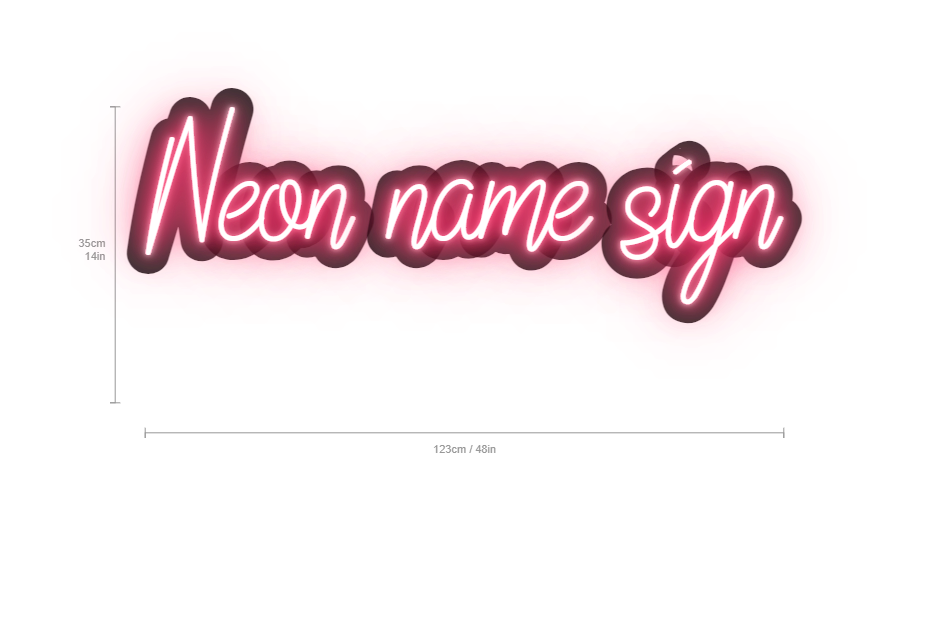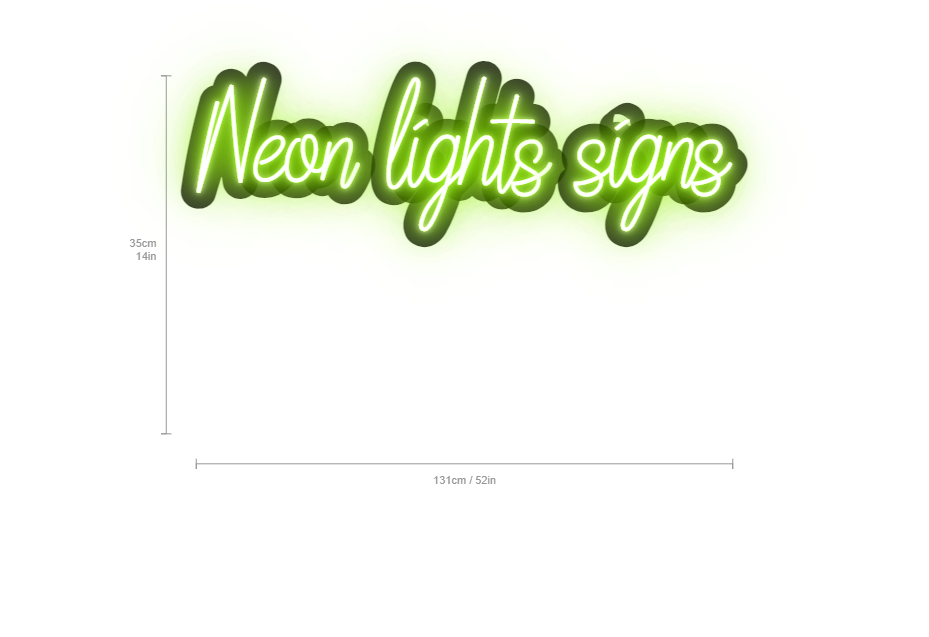Customized neon signs have experienced a resurgence in popularity, bridging the gap between vintage aesthetics and modern design. They are no longer confined to the classic diner or bar settings; instead, they have found a place in contemporary homes, businesses, and events. This article will explore the essential considerations in creating customized neon signs, discuss their impact on branding and aesthetics, and examine current trends in the market.
1. Understanding Neon Signs
1.1 What Are Neon Signs?
Neon signs are illuminated signs made from glass tubes filled with neon or other gases, which glow when electricity is passed through them. While traditional neon signs use glass tubing, modern alternatives often employ LED technology to mimic the neon effect, offering greater flexibility and efficiency.
1.2 Types of Neon Signs
-
Traditional Neon Signs: Hand-bent glass tubes filled with neon or argon gas. These are often seen as classic and more authentic but can be more fragile and expensive.
-
LED Neon Signs: Made with flexible LED strips, these signs are more durable, energy-efficient, and can be produced in various colors and shapes.
2. Considerations for Customized Neon Signs

When creating customized neon signs, several key factors must be considered:
2.1 Purpose and Audience
Understanding the primary purpose of the customized neon signs is crucial. Is it for a business, personal decor, an event, or a gift? The target audience will influence design choices. For instance, a sign for a children’s party would have a playful design, while one for a professional business might be sleek and sophisticated.
2.2 Design and Aesthetics
-
Color Schemes: Neon signs can be created in a myriad of colors. The choice of color should reflect the brand's identity or the desired mood. For example, bright colors like pink and blue can convey energy and excitement, while softer tones can evoke calmness.
-
Typography: The font used in a neon sign significantly affects its readability and aesthetic appeal. Custom typography can create a unique identity, while standard fonts may enhance clarity.
-
Size and Placement: The dimensions of the sign should be appropriate for its location. A large sign may dominate a small space, while a tiny sign might get lost in a large area. Additionally, the sign's placement should consider visibility from different angles.
-
Shape and Form: Customized neon signs can be made in various shapes, from straightforward text to intricate designs. Creative shapes can enhance visual interest and attract attention.
2.3 Materials and Technology
-
Glass vs. LED: While traditional customized neon signs use glass, many opt for LED options due to their flexibility, safety, and lower energy consumption. LED signs can imitate neon aesthetics while providing durability and a range of design options.
-
Durability: Consideration of the materials used is essential, especially for outdoor signs. Signs exposed to the elements should be made from weather-resistant materials.
-
Safety: Traditional neon signs involve high voltage and fragile glass, which can pose safety risks. LED signs are generally safer as they operate at lower voltages and are more robust.
2.4 Regulations and Compliance
Before creating a neon sign, it’s crucial to check local regulations regarding signage, including size restrictions, illumination levels, and zoning laws. Compliance with these regulations can prevent legal issues and fines.
3. Impact on Branding
Customized neon signs can have a significant impact on a business’s branding strategy:
3.1 Brand Identity
Neon signs can effectively communicate a brand’s identity and values. For instance, a vintage-themed café might use retro-style neon signs to evoke nostalgia, while a tech startup might opt for sleek, modern designs.
3.2 Visibility and Recognition
A well-placed customized neon sign can enhance visibility, making a business more recognizable. Bright, eye-catching signs can attract foot traffic, especially in busy urban areas. The unique glow of neon can stand out against a city’s backdrop, drawing in potential customers.
3.3 Customer Experience
Customized neon signs contribute to a brand’s ambiance, influencing customer experience. For example, an inviting neon sign can create a welcoming atmosphere in a restaurant or bar, encouraging patrons to stay longer.
4. Applications of Customized Neon Signs
Customized neon signs find applications in various domains:
4.1 Commercial Use
-
Retail Spaces: Neon signs can highlight sales or promotions, drawing customers' attention to specific products or areas within a store.
-
Restaurants and Bars: Custom signs can convey the establishment's theme or specialty, enhancing the dining experience.
-
Event Marketing: Customized signs for events (weddings, parties, corporate gatherings) can add a personal touch and contribute to the overall theme.
4.2 Personal Use
-
Home Decor: Many individuals create neon signs for personal spaces, such as bedrooms or home offices, to express personality or interests.
-
Gifts: Customized neon signs make unique and thoughtful gifts for special occasions, allowing recipients to display their name, favorite quote, or a meaningful symbol.
5. Current Trends in Customized Neon Signs
5.1 Sustainability
With growing awareness of environmental issues, there is a trend towards more sustainable production methods in customized neon sign manufacturing. Many companies are focusing on using eco-friendly materials and energy-efficient technologies.
5.2 Minimalist Designs
Simplicity is key in modern design trends. Many consumers prefer minimalist neon signs that convey messages in a straightforward yet artistic manner. These designs can complement various interior styles, making them versatile decor options.
5.3 Interactive Elements
Incorporating technology into neon signs is becoming more common. Some businesses are experimenting with interactive elements, such as QR codes embedded in the sign, which can direct customers to websites or social media pages.
5.4 Personalization
The demand for personalization continues to rise. Custom signs that reflect personal interests or milestones are increasingly popular, allowing individuals to express themselves uniquely.
5.5 Vintage Revival
There is a notable trend towards vintage aesthetics, with many businesses and individuals opting for retro-style neon signs that evoke nostalgia. This trend taps into the emotional connection associated with bygone eras, appealing to a wide range of audiences.
Conclusion
Customized neon signs offer a unique way to express creativity, enhance branding, and create memorable experiences. As they continue to evolve with technology and design trends, they remain a versatile option for both commercial and personal use. By considering key factors such as purpose, design, materials, and regulations, individuals and businesses can create impactful neon signs that not only stand out visually but also resonate with their intended audiences. As the market for customized neon signs grows, embracing trends such as sustainability, personalization, and minimalism will be essential for success in this vibrant and dynamic industry.




